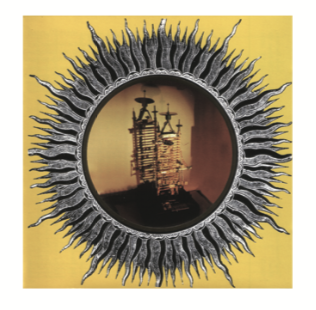A Secret History of Phonography: A Consideration of a Field Recording of a Dog Pound
Christopher DeLaurenti
On June 21, 1996, Claude Matthews smuggled his microphones into the Center for Animal Care and Control in Manhattan and captured the harrowing music of doomed dogs. You hear peals of yapping and barking, then a strange, sudden pause; a tiny, crouched snippet of contented oohs flow from a distant radio. A heavy door rolls open. A dog howls again, begging for freedom (or at least attention), and the chorus of barking resumes. The resulting album, DogPoundFoundSound(Bad Radio Dog Massacre1, might be the most brutal yet profoundly moving sound recording you will ever hear.
Matthews’s recording also marks a rebellious milestone in the history of field recording, a practice that began with Thomas Edison. In 1877, after several attempts by other inventors, Edison perfected the phonograph, thus christened by combining the Greek words for sound or voice and writer. Emile Berliner patented the turntable gramophone in 1887, and soon thereafter, ethnographers traveled the world, recording the music and language of “primitive” peoples.
In the early days of field recording, gear was bulky. When the famed recordist Alan Lomax set out across the American South in the summer of 1933, he and his father hauled a 315-pound acetate disk recorder to record unknown musicians, including the great folk singer Lead Belly. As technology improved, the size and cost of portable recording equipment shrank. In the early 1950s, Tony Schwartz took his portable recorder into the streets of New York City. Albums such as New York 19, The New York Taxi Driver, and 1, 2, 3, and a Zing Zing Zing capture street musicians (including the legendary Moondog), children’s jump-rope songs, and everyday speech. In subsequent decades, Bernie Krause, Dan Gibson, Lang Elliott, and many others ventured into wilderness to capture and preserve environmental sound. The World Soundscape Project, founded by R. Murray Schafer in the late 1960s, inaugurated the systematic recording and scientific measurement of noisy urban environments. Concurrently, traditional composers began using field recordings in their work. Long before musique concrète, Italian composer Ottorino Respighi requested a specific gramophone recording of a nightingale in his 1924 symphonic triptych, The Pines of Rome.
Until the ’90s, a single ideal prevailed in field recording, one that kept the recordist invisible and enshrined objective accuracy, fidelity, and realism. Inaudible edits shored up a seamless sonic reality. Flaws such as wind rumble, excessive tape hiss, pops, microphone handling noise, and other unwanted byproducts of recording were considered tokens of incompetence, lackluster equipment, or routine bad luck. The equipment was costly too, until the advent of the portable MiniDisc (MD) recorder. Introduced by Sony in 1992, the inexpensive MD not only peeled away a discouraging layer of cassette hiss, but made it easy for anyone to index, retrieve, and frame any sound within earshot.
In recent years, a protean group of sound artists have reclaimed the term “phonography”—with its Edison-era connotations—and have begun making field recordings in unusual locations from unexpected, and at times poetic, perspectives: Albums such as Quiet American’s Plumbing and Irrigation of South Asia, Peter Cusack’s recordings made in wintry Siberia, Baikal Ice, and the resonating wind silos of mnortham’s Breathing Towers teem with musical, ear-bewitching sounds.
A few phonographers bluntly rebel against the commercial values of accuracy, fidelity, and seamless realism. DogPoundFoundSound(Bad Radio Dog Massacre justifies this rebellion of phonography: The occasional disruptions, the blatant shift of microphones, and the anomalous pops compel us to peer closer into the shrouded sound while reminding us that we are separate from what we hear—and thus free to act. The spectral howls and morose yelps of innocent, imprisoned animals live in our hearts, reminding us that there is justice yet to be recorded.
—Christopher DeLaurenti





